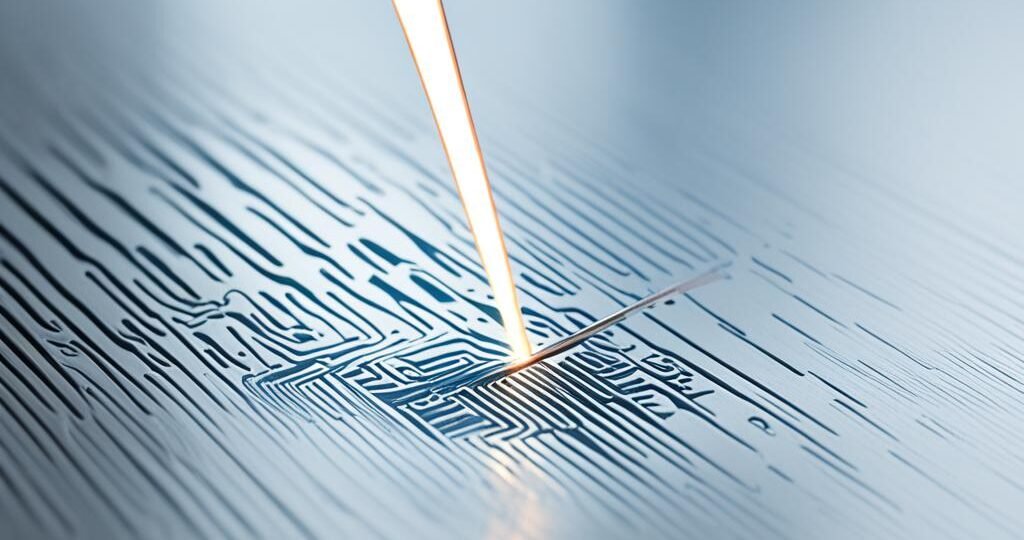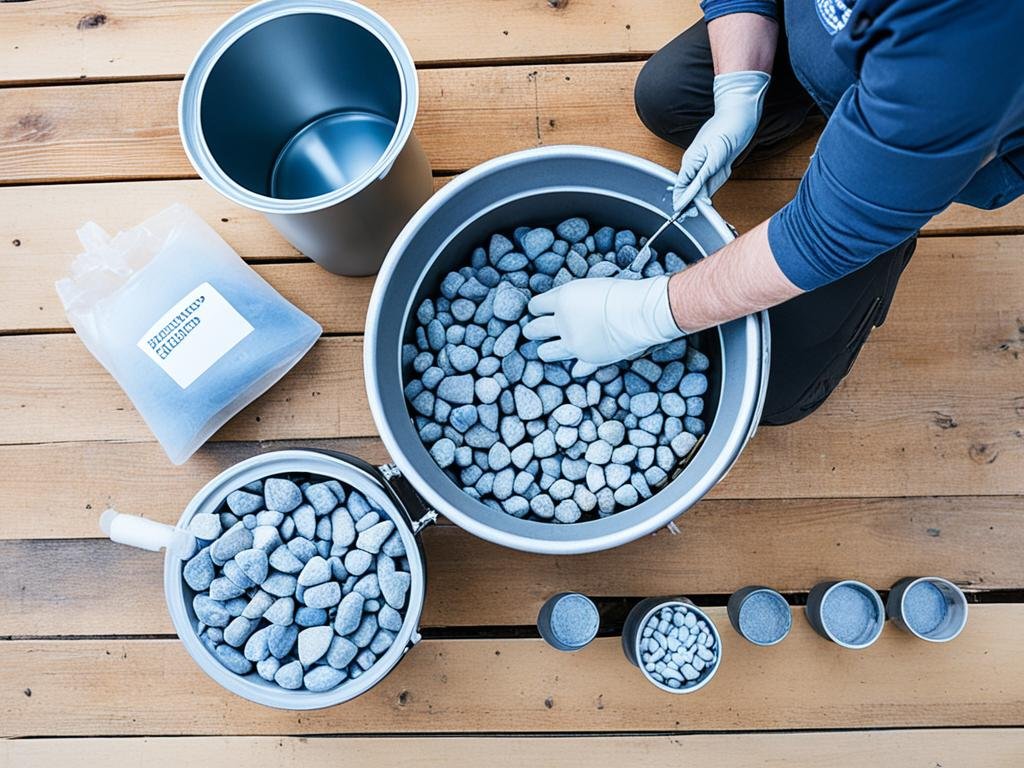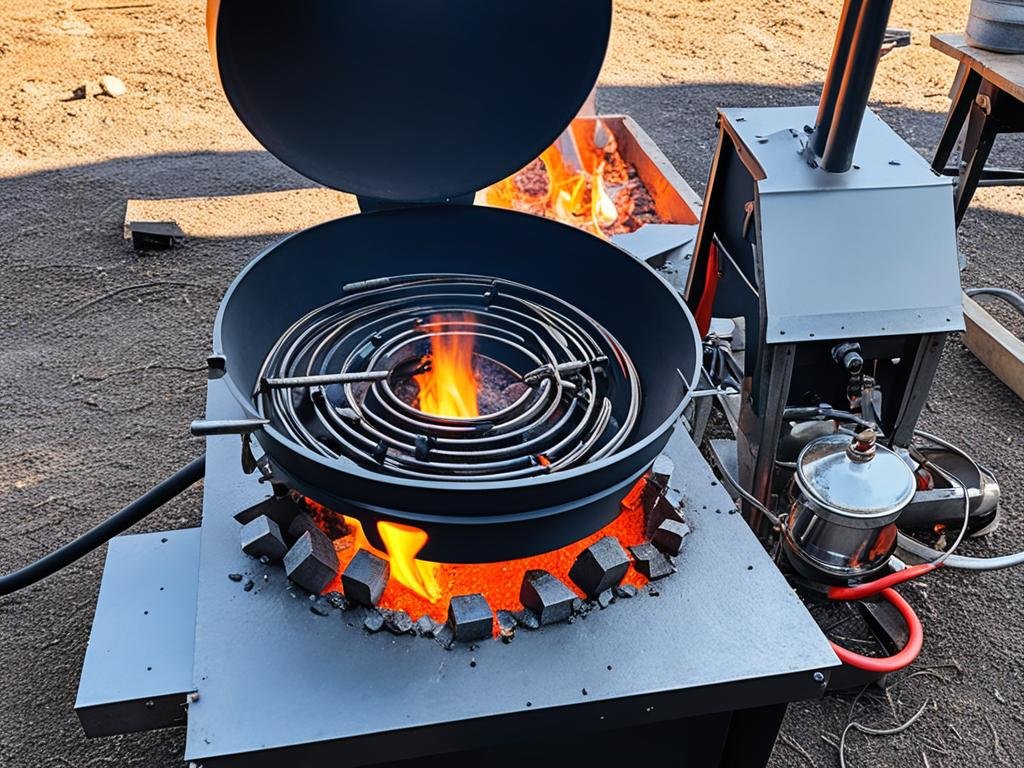
At Devil n Dove, we take ordinary objects and transform them into personalized treasures with our laser engraving service. Using precision laser technology, we can etch intricate designs, logos, and text onto a variety of materials including metal, wood, glass, and acrylic. Whether you’re looking to create custom jewelry, unique gifts, or bespoke business merchandise, our laser engraving offers unparalleled detail and durability. Let us help you bring your creative vision to life with our professional and meticulous engraving service.
Support us at www.devilndove.com or visit our store at www.devilndove.online.
Key Takeaways:
- Choosing the right material is crucial for laser engraving projects.
- Wood, acrylic, glass, leather, and metal are popular materials for laser engraving.
- Each material has unique properties and considerations to keep in mind.
- Understanding material characteristics can help you achieve desired engraving results.
- Our laser engraving service offers exceptional detail, durability, and precision.
Wood for Laser Engraving
Wood is a versatile and popular material for laser engraving, known for its natural beauty and unique characteristics. When choosing wood for laser engraving, several factors should be considered to ensure optimal results.
Choosing the Right Wood
Hardwoods: Hardwoods like maple, cherry, and walnut are ideal for detailed engravings due to their tight and uniform grain. The dense nature of these woods allows for precise and intricate designs to be engraved.
Softwoods: Softwoods like pine and cedar can be used for laser engraving, but they may result in less precision due to their open and irregular grain patterns. Although they may lack the tight grain of hardwoods, softwoods can still yield beautiful engraved designs.
It’s important to test a small area of the wood before starting your project to ensure that the desired effect is achieved. This will help you determine if the wood’s grain and color complement your design.
Testing Wood for Engraving
Before engraving on a larger surface, it’s recommended to test the wood to ensure that it responds well to the laser. Testing allows you to fine-tune the parameters such as power, speed, and frequency settings to achieve the desired effect.
Thickness of Wood
The thickness of the wood also plays a crucial role in laser engraving. Thicker pieces of wood may require adjustments in power and speed settings to properly engrave the design. Similarly, thinner pieces of wood need to be handled delicately to avoid damage during the engraving process.
Wood-Based Materials
In addition to solid wood, there are other wood-based materials that are suitable for laser engraving. Plywood, for example, can be an affordable option with unique visual qualities, making it popular in various laser engraving projects.
| Wood | Grain | Hardness | Thickness (inches) |
|---|---|---|---|
| Maple | Tight and uniform | Hard | Variable |
| Cherry | Tight and uniform | Medium to hard | Variable |
| Walnut | Tight and uniform | Hard | Variable |
| Pine | Open and irregular | Soft | Variable |
| Cedar | Open and irregular | Soft | Variable |
Choosing the right wood for laser engraving is essential to achieve the desired results. Consider the type of wood, its grain pattern, hardness, and thickness when selecting the material. With proper testing and adjustments, you can create stunning laser engravings on wood and wood-based materials.
Support us at www.devilndove.com or our store at www.devilndove.online.
Acrylic for Laser Engraving
When it comes to laser engraving, acrylic is a highly versatile material that offers countless possibilities. Choosing the right acrylic for your engraving projects is crucial in achieving the desired results. There are a few key factors to consider, such as the type of acrylic, the color of the material, power and speed settings, and the thickness of the acrylic.
Type of Acrylic:
There are two main types of acrylic used in laser engraving: cast acrylic and extruded acrylic. Cast acrylic is the preferred choice for laser engraving due to its smooth and polished finish. It produces cleaner and more precise engravings compared to extruded acrylic. When selecting acrylic for laser engraving, opt for cast acrylic to ensure the best outcomes.
Color Selection:
While clear and white acrylics are ideal for laser engraving, colored acrylics can also be used with some limitations. Keep in mind that the darker the color of the acrylic, the more power it will require to achieve a noticeable contrast in the engraving. Clear and white acrylics provide the best results in terms of clarity and visibility of the engraving.
Power and Speed Settings:
The appropriate power and speed settings for acrylic engraving depend on the thickness and density of the material. Thicker acrylic may require lower power settings to prevent melting, while thinner acrylics may be more delicate and require careful handling. It is recommended to test different power and speed combinations on scrap pieces of acrylic to determine the optimal settings for your specific engraving project.
| Acrylic Thickness | Recommended Power and Speed Settings |
|---|---|
| 1/8″ (3mm) | Power: 60-80%Speed: 100% |
| 1/4″ (6mm) | Power: 40-60%Speed: 100% |
| 3/8″ (9mm) | Power: 20-40%Speed: 100% |
| 1/2″ (12mm) | Power: 10-30%Speed: 100% |
Remember to always adjust the power and speed settings based on the thickness of the acrylic and perform test runs to ensure the desired engraving results.
Acrylic offers endless possibilities for laser engraving projects. Its versatility, clarity, and vibrant colors make it a popular choice among engravers. By selecting the right type of acrylic, considering the color options, and fine-tuning the power and speed settings, you can achieve stunning and precise engravings on acrylic material.
Support us at www.devilndove.com or our store at www.devilndove.online.
Glass for Laser Engraving
Glass is a stunning choice for laser engraving projects, adding elegance and sophistication to any design. When selecting glass for laser engraving, it’s essential to choose glass specifically designed for this purpose to achieve optimal results. The surface of the glass should be smooth and free of any scratches or imperfections that could affect the engraving outcome.
Not all types of glass are suitable for laser engraving. Some glasses may have coatings or colors that can interfere with the engraving process. It’s important to choose clear glass without any additional treatments for the best results. Testing on scrap pieces of glass before starting the final project can help perfect the technique and settings.
To ensure the glass doesn’t crack or shatter during engraving, it’s recommended to use lower power settings. Additionally, surface preparation techniques like using a wet paper towel or masking tape can help prevent any potential damage. Take extra care when engraving glass to achieve precise and crisp results.
For all your glass laser engraving needs, support us at www.devilndove.com or visit our store at www.devilndove.online.
| Type of Glass | Suitability for Engraving |
|---|---|
| Clear Glass | Highly suitable for laser engraving |
| Coated Glass | Not suitable for laser engraving |
| Colored Glass | May not provide optimal engraving results |
Metal for Laser Engraving
Metal engraving is a popular application in laser engraving, offering endless opportunities for personalization and customization. Whether you’re creating intricate designs on jewelry, adding personalized messages to commemorative items or labeling tools for easy identification, laser engraving on metal can achieve stunning results.
When it comes to choosing the right metal for laser engraving, several factors come into play. The type of laser you use depends on the desired outcome, with fiber lasers and CO2 lasers with a marking compound being the most common choices. Fiber lasers are ideal for engraving stainless steel, aluminum, brass, and other metals, while CO2 lasers are better suited for marking coated metals.
Next, you’ll want to consider the power and speed settings for your laser engraving machine. The appropriate settings depend on the type of metal, the desired engraving depth, and the size of the design. Experimentation and sample tests are essential to determine the optimal settings that achieve the desired effect without damaging the metal.
Before you begin the engraving process, it’s crucial to clean the metal surface thoroughly. Any dirt, dust, or residue can interfere with the engraving and result in an unclear or distorted outcome. Use a gentle cleanser and a soft cloth to ensure the metal is free from any contaminants.
Remember: Different metals may require different approaches and considerations. Factors such as the hardness of the surface and the thickness of the metal can influence the engraving process. Always refer to the manufacturer’s guidelines and recommendations specific to the metal you’re working with.
To summarize, metal engraving with laser technology offers endless possibilities for customization and personalization. By choosing the appropriate laser type, adjusting power and speed settings, and ensuring a clean metal surface, you can achieve exceptional results in your metal engraving projects.
Support us at www.devilndove.com or our store at www.devilndove.online.
Conclusion
Selecting the right materials for your laser engraving projects is crucial to achieve the desired results. Wood, acrylic, glass, leather, and metal are all popular choices with unique characteristics and considerations. When selecting a material, factors such as the type of material, grain, hardness, thickness, color, and surface preparation techniques should be taken into account.
Wood provides natural beauty, and hardwoods like maple, cherry, and walnut are ideal for detailed engravings. Softwoods such as pine and cedar can also be used, but may result in less precision due to their open grain patterns. Acrylic is highly versatile and offers a range of color options. Cast acrylic is generally preferred for laser engraving due to its polished finish.
Glass can add an elegant touch to your projects, but it’s important to choose glass specifically designed for engraving and to follow proper surface preparation techniques. Metal engraving is common for personalization, and the choice of laser and cleaning techniques are important considerations.
By understanding the properties and characteristics of different materials, and experimenting with various parameters, you can select the most suitable material for your laser engraving projects and achieve impressive results. Support us at www.devilndove.com or visit our store at www.devilndove.online.
How do I select suitable laser engraving materials?
To select suitable laser engraving materials, consider the properties and characteristics of different materials such as wood, acrylic, glass, leather, and metal. Factors to consider include the type of material, grain, hardness, thickness, color, and surface preparation techniques. Experimenting with different parameters can help you choose the most suitable material for your laser engraving project.
What should I consider when choosing wood for laser engraving?
When choosing wood for laser engraving, consider factors such as the type of wood, grain, hardness, and thickness. Hardwoods like maple, cherry, and walnut are ideal for detailed engravings due to their tight and uniform grain. Softwoods like pine and cedar can be engraved but may result in less precision due to their open and irregular grain pattern. It’s also important to test a small area of the wood before starting the project to ensure the desired effect.
What are some wood-based materials suitable for laser engraving?
In addition to solid wood, plywood is a wood-based material that is suitable for laser engraving. It is affordable and offers a unique appearance that can enhance your engraving projects.
How do I choose acrylic for laser engraving?
When choosing acrylic for laser engraving, consider factors such as the type of acrylic (cast vs. extruded) and the color of the material. Cast acrylic is generally preferred for laser engraving due to its cleaner and more polished finish. Clear or white acrylics are generally the best choice for laser engraving, although colored acrylics can also be used with some limitations. Power and speed settings should be adjusted based on the thickness and density of the acrylic to achieve the desired effect.
Can glass be used for laser engraving?
Yes, glass can be used for laser engraving. It adds an elegant touch to projects. When choosing glass for laser engraving, select glass specifically designed for engraving to achieve the best results. The surface of the glass should be smooth and free of scratches. Certain types of glass with coatings or colors may not be suitable for laser engraving. Lower power settings and surface preparation techniques can help prevent cracking or shattering.
What type of laser is best for metal engraving?
The type of laser used for metal engraving depends on the desired result. Fiber lasers and CO2 lasers with a marking compound are commonly used for metal engraving. Power and speed settings should be adjusted based on the type of metal, engraving depth, and size of the design. Cleaning the metal surface thoroughly before engraving is crucial to ensure a crisp and clear result.
How should I clean the metal surface before engraving?
To clean the metal surface before engraving, thoroughly remove any dirt, grease, or oxidation using an appropriate cleaner. This will ensure a clean surface for the laser to engrave on and result in a clearer and higher quality engraving.
Source Links
RELATED POSTS
View all



